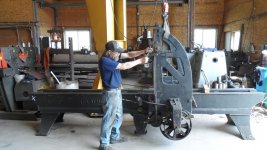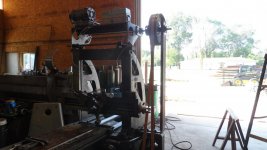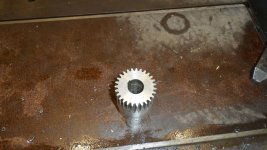Hey all
I just acquired a Mark Flather planer and I will post pictures after its in the shop later today. Its missing the flat belts but I know I can get them . I guess my question would be just how to measure for new belts knowing that they have to have some slip for the pulleys. The table measure 109.5" by 23.5" Anyone out there have one of these that may help with belting questions.Or is there a good way to by pass the belts and mount another drive system of sorts. Thanks mike
I just acquired a Mark Flather planer and I will post pictures after its in the shop later today. Its missing the flat belts but I know I can get them . I guess my question would be just how to measure for new belts knowing that they have to have some slip for the pulleys. The table measure 109.5" by 23.5" Anyone out there have one of these that may help with belting questions.Or is there a good way to by pass the belts and mount another drive system of sorts. Thanks mike












